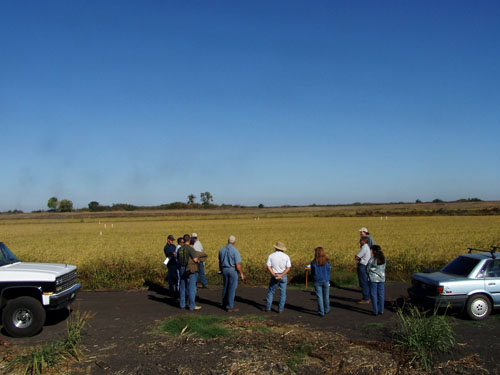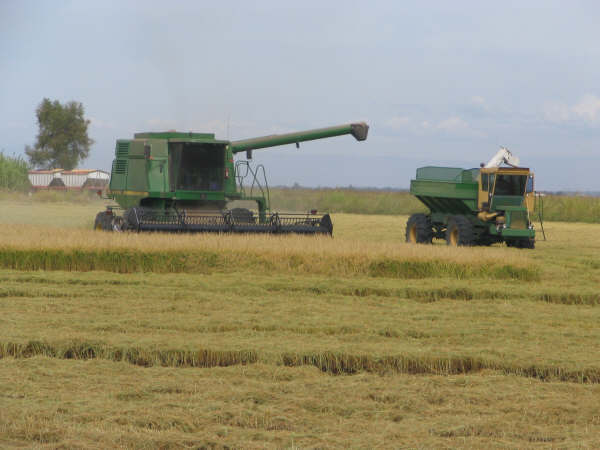Delta Rice Research Project
California's growing population continues to stress water supplies, resulting in water quality and supply conflicts amongst end-users. More than 22 million people drink water that originates in the lower Sacramento River and Sacramento-San Joaquin Delta, where agricultural activities are thought to be decreasing water quality. Specifically, elevated dissolved organic carbon (DOC) concentrations in Delta water are of significant concern. Ducks Unlimited's Delta Rice Project was an experiment to find water quality improvement alternatives, such as rice growing, that benefit wetlands and waterfowl within the Delta region.
|
|
| The Delta Rice Project Map. |
Agricultural production in the Delta releases DOC into the irrigation return waters as a result of crop residues and soil organic matter decomposition. This irrigation water returns into Delta channels for eventual use as drinking water. The DOC released from agricultural activities potentially poses serious health concerns when Delta waters are disinfected for use as drinking water. During disinfection, DOC and bromide form disinfection byproducts (DBPs), of which trihalomethanes (THMs) and haloacetic acids (HAAs) are the most abundant. These DBPs, stringently regulated by the U.S. Environmental Protection Agency, are carcinogenic and mutagenic. This project experimented with cost-effective combinations of alternative source waters, source control and treatment technologies to achieve reduced TOC levels from agricultural drainage in the Delta and to help to avoid far more costly alternatives.
 |
| Growing rice in the Delta is difficult due to mild temperatures. |
This Project had a number of goals:
&iddot; Experiment with Best Management Practices (BMPs) that reduce DOC, DBP precursors
(DBPPs) and nitrogen (N) export from rice fields
&iddot; Investigate wildlife use of Delta rice fields
&iddot; Determine economical viability of rice production in the Delta
To achieve these goals, DU selected three 100-acre fields along an east-west transect in the Delta and assisted farmers in the conversion of corn fields to rice fields to ensure participation in the research. This project provided checkboxes and other minor supplies and funds site preparation (e.g. field leveling and irrigation levee work) to grow rice and used a portion of those properties that to conduct the study. No assets of any significant value procured by this grant-funded project remained after the project period expired. The study assessed DOC, DBPPs and N loads from rice production, compared these export rates with those of wetlands and corn (the other primary Delta land practice alternatives) and determined if these loads could be further reduced. This project was the first project to address rice production as a land use option in the Delta and to focus on methods of growing rice in a way that minimizes DOC, DBPPs and nitrogen loading to the Delta.
|
|
| Inspection and education at a Delta rice field. |
Rice production is more effective at limiting DOC, DBPP and N export into the Delta than corn production is. Rice production reduces oxidation of peat soils and minimizes mobilization of nutrients, particularly DOC. The mix of usage by land birds and water birds between natural and agricultural habitats during the different seasons suggested that continued integration of managed wetlands along with rice and corn fields would provide habitat for a variety of breeding and migratory waterfowl and water birds. The study also found that rice production in the Delta, even on this small scale of approximately 300 acres, was profitable. Many landowners will continue to grow rice, possibly including new, cold-tolerant varieties that are in development and will further increase future yields.
 |
| Rice in the Delta can benefit both people and waterfowl. |
Waterfowl habitats in the Delta have largely disappeared from historic levels. Increased rice production here may begin to attract waterfowl back to the Delta and San Pablo Bay region. The project performance period lasted from the fall of 2004 to the spring of 2006.
Ducks Unlimited uses cookies to enhance your browsing experience, optimize site functionality, analyze traffic, and deliver personalized advertising through third parties. By continuing to use this site, you agree to our use of cookies. View Privacy Policy